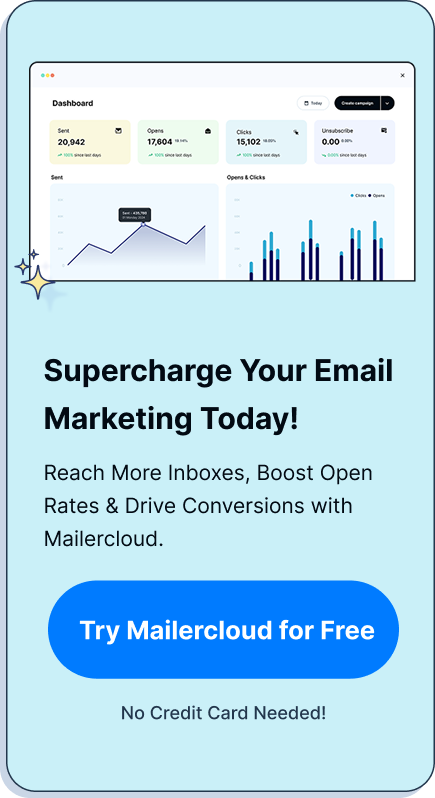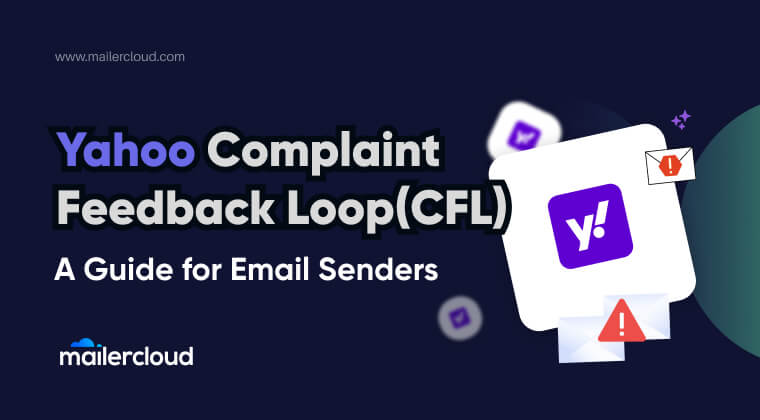Transactional emails are a cornerstone of any effective email marketing strategy. Unlike marketing emails, which are crafted to promote products or services, transactional emails are automated responses triggered by a user’s specific action—such as making a purchase, signing up for an account, or resetting a password. These emails are crucial for maintaining clear, consistent communication with your customers, ensuring that they feel informed and valued at every step of their interaction with your business. This guide will explore the essential best practices for crafting effective transactional emails and provide actionable insights to help you optimize your email strategy. Additionally, we’ll highlight how Mailercloud’s advanced transactional email service can elevate your customer communications, ensuring they are reliable, personalized, and effective.
Table of Contents
What Are Transactional Emails?
Transactional emails are automated emails sent in response to a user’s direct interaction with your business. Unlike marketing emails, which are typically sent to large segments of your customer base to promote products, services, or special offers, transactional emails are one-to-one communications. They deliver critical information that the recipient expects and needs to complete a process or stay informed.
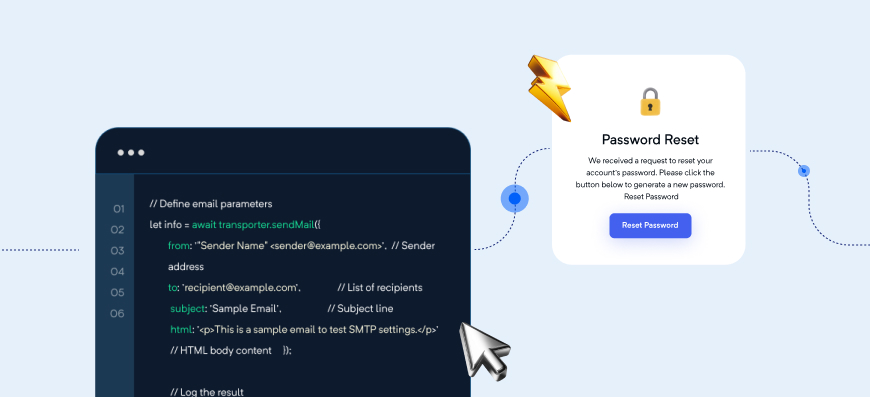
For example, when a customer makes a purchase on your website, they anticipate receiving an order confirmation email. This email not only reassures them that their transaction was successful but also provides them with essential details such as the order summary, delivery information, and customer support contacts. Similarly, if a user forgets their password, they expect a secure, automated password reset email to regain access to their account.
The key characteristic of transactional emails is their relevance and timeliness. These emails are directly tied to a specific user action, making them highly anticipated and, therefore, much more likely to be opened and read. This high open rate is what makes transactional emails a powerful tool for building trust and fostering customer loyalty.
Why are Transactional Emails Important
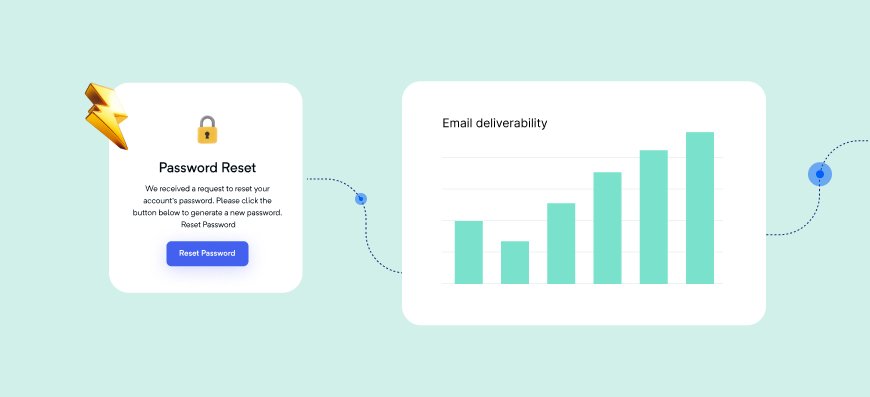
Transactional emails play a vital role in your overall customer communication strategy. Their importance stems from the fact that they are not just informative; they are essential for maintaining a seamless customer experience. When a customer receives a timely and accurate transactional email, it reinforces their trust in your brand. For instance, an immediate order confirmation email reassures the customer that their transaction was processed correctly. This confirmation is critical for reducing anxiety and ensuring customer satisfaction.
Moreover, transactional emails typically have higher open rates than marketing emails. This is because recipients are expecting these emails and are keen to read the information they contain. As a result, transactional emails offer a unique opportunity to engage with your customers in a meaningful way. By delivering clear, relevant information right when your customers need it most, you can enhance their experience and strengthen their relationship with your brand.
Mailercloud understands the significance of transactional emails in customer communication. Our platform is designed to ensure that your transactional emails are not only delivered on time but also optimized for maximum impact. Whether you need to send order confirmations, password reset emails, or any other type of transactional message, Mailercloud provides the tools and flexibility you need to create highly effective emails that resonate with your audience.
Transactional Emails Best Practices
Creating effective transactional emails requires attention to detail and a focus on the customer experience. Here are some best practices to ensure your transactional emails are both functional and engaging:
Personalization

Personalizing your transactional emails can significantly enhance their effectiveness. This goes beyond just including the recipient’s name in the email. Consider incorporating relevant details related to the user’s transaction, such as their purchase history, preferences, or recent interactions with your brand. Personalization makes the email feel more like a one-on-one communication rather than a generic automated message.
Clear and Direct Subject Lines
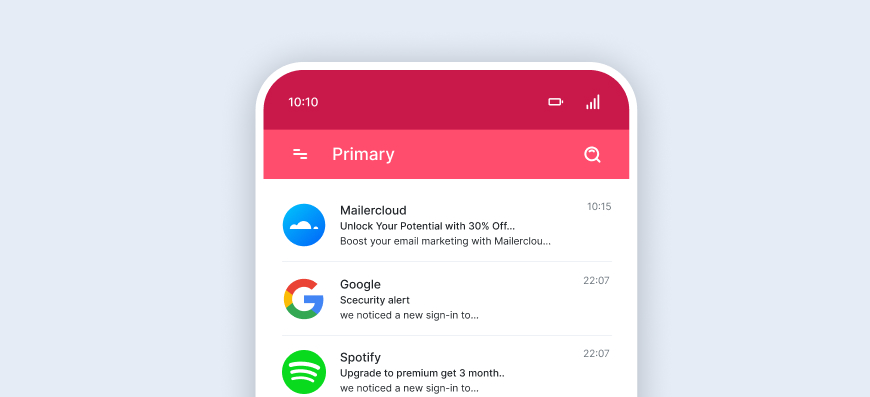
The subject line of your transactional email is the first thing your recipient will see, so it’s crucial to make it clear and concise. A subject line like “Your Order Confirmation #12345” or “Reset Your Password” immediately communicates the purpose of the email, making it easy for the recipient to understand why they are receiving it. Avoid using vague or overly promotional language in your subject lines, as this can confuse recipients or make your email seem less trustworthy.
Mobile Optimization
With a significant portion of emails being opened on mobile devices, it’s essential to ensure your transactional emails are optimized for mobile viewing. This means using a responsive design that adjusts to different screen sizes, ensuring that your email looks great whether it’s viewed on a smartphone, tablet, or desktop. Mobile optimization is not just about aesthetics; it also affects the readability and usability of your emails, which can directly impact customer satisfaction.
Mailercloud’s platform is equipped with advanced features that help you implement these best practices seamlessly. Our email templates are fully customizable and mobile-responsive, allowing you to create emails that align with your brand’s identity while delivering a superior user experience. Additionally, our robust personalization tools enable you to tailor your emails to each recipient, making your transactional communications more relevant and impactful.
Examples and Types of Transactional Emails
To illustrate these best practices, let’s look at a few examples of transactional emails that effectively combine functionality with a positive user experience.
Order Confirmation Emails
A well-crafted order confirmation email does more than just confirm the purchase. It should provide a detailed summary of the order, including the items purchased, the total amount, shipping information, and estimated delivery date. Additionally, it can include links to related products or services that the customer might find useful, thereby opening up opportunities for cross-selling or upselling. For instance, if your customer purchased an ugly Christmas sweater, recommend some accessories like beanies, bracelets, or earrings that could pair with custom clothing items that your buyers recently purchased, and include an exclusive discount code for the next order. This type of email reassures the customer that their order was processed correctly and provides them with all the information they need in one place.
Password Reset Emails
Security is paramount when it comes to password reset emails. These emails should include a secure, one-time-use link that allows the recipient to reset their password. It’s also a good practice to set a time limit on the validity of the link to enhance security further. The email should be straightforward, with clear instructions on how to reset the password and what to do if the recipient did not request the reset.
Abandoned Cart Emails
Abandoned cart emails are an effective way to recover lost sales. These emails remind customers that they have left items in their cart and encourage them to complete their purchase. To make these emails more effective, include a visual representation of the items left in the cart, along with a direct link to the checkout page. Offering a limited-time discount or free shipping can also incentivize the customer to complete the transaction.
Mailercloud’s transactional email service provides all the tools you need to create these types of emails quickly and efficiently. Our platform supports dynamic content, allowing you to automatically pull in relevant details such as order summaries, product images, and personalized recommendations. This ensures that your emails are not only informative but also tailored to each recipient’s specific needs and preferences.
How to Improve Transactional Email Deliverability
Ensuring that your transactional emails are delivered to your recipients’ inboxes promptly is crucial. Here are some strategies to improve deliverability:
Email Authentication
Implementing authentication protocols like SPF, DKIM, and DMARC can help verify that your emails are coming from a legitimate source. This reduces the likelihood of your emails being marked as spam, thereby improving deliverability.
Avoiding Spam Traps
Regularly clean your email list to remove invalid or inactive email addresses. Sending emails to these addresses can trigger spam traps, which can harm your sender reputation and reduce deliverability.
Monitoring Email Metrics
Keeping track of key metrics such as open rates, click-through rates, and bounce rates can help you identify potential issues with your email campaigns. By monitoring these metrics, you can make data-driven adjustments to improve performance.
At Mailercloud, we prioritize email deliverability, offering robust tools to help you monitor and optimize your transactional email campaigns. Our platform provides real-time analytics and detailed reports, allowing you to track the success of your emails and make informed decisions to enhance their performance. We also offer advanced deliverability features, including authentication and anti-spam measures, to ensure that your emails reach their intended recipients without delay.
Transactional Emails vs. Marketing Emails: Key Differences
When it comes to email communication, understanding the key differences between transactional emails and marketing emails is crucial for any business. Each type serves a distinct purpose and requires a different approach to maximize its effectiveness. In this section, we’ll explore these differences in detail, helping you make informed decisions about when and how to send transactional emails versus marketing emails.
Purpose and Content
The primary distinction between transactional emails and marketing emails lies in their purpose. Transactional emails are sent in direct response to a user’s action, such as making a purchase, resetting a password, or subscribing to a service. These emails are designed to provide necessary information that the recipient expects. Examples include order confirmations, notification emails, and account-related alerts. The email content in transactional emails is straightforward, focusing on delivering relevant information that completes a specific user-initiated process.
On the other hand, marketing emails are intended to promote products, services, or brand awareness. These emails are typically sent to a broader audience and are designed to engage recipients with offers, discounts, or newsletters. The email content in marketing emails is often persuasive, aiming to drive actions like making a purchase or signing up for an event. Promotional emails fall under this category and are crafted to entice customers with special deals or new product launches.
How Emails Are Sent
The method of sending emails is another key difference between transactional and marketing emails. Transactional emails are usually triggered automatically by specific user actions or events. For instance, when a customer makes a purchase, an order confirmation email is automatically generated and sent to their inbox. These emails are highly personalized, using information related to the user’s action to ensure relevance.
In contrast, marketing emails are often sent as part of a planned campaign. Businesses typically use email service providers (ESPs) to schedule and distribute these emails to large segments of their customer base. Marketing emails can be sent based on various criteria, such as customer demographics, past purchase behavior, or engagement history.
Templates and Design
When it comes to design, transactional emails and marketing emails also differ significantly. Transactional email templates are usually simple and functional, focusing on clarity and ease of use. The goal is to ensure that the recipient can quickly access the information they need without distraction. For example, a password reset email will include clear instructions and a prominent link for resetting the password, ensuring that the user can resolve their issue efficiently.
Marketing emails, however, often feature more elaborate designs. These emails may include eye-catching graphics, promotional banners, and multiple calls to action to engage the recipient. The design of promotional emails is typically aligned with the campaign’s goal, whether that’s driving sales, increasing website traffic, or boosting social media engagement.
Deliverability and Reliability
Deliverability is a crucial aspect where transactional emails often have an advantage. Because these emails are expected by the recipient, they are less likely to be marked as spam and more likely to reach the inbox. Using a reliable email service provider is essential for ensuring that transactional emails are delivered promptly and without issues. A good ESP will offer features like email authentication and deliverability monitoring to help maintain high delivery rates.
Marketing emails, particularly those that are highly promotional, may face more challenges in reaching the inbox due to spam filters. This is why it’s important to work with a reliable email service provider that can optimize deliverability and ensure that your marketing messages reach your audience.
Regulatory Considerations
Another important difference is how each type of email is regulated. Transactional emails are generally exempt from many of the regulations that apply to marketing emails, such as the need for explicit opt-in consent. This is because transactional emails are seen as necessary communications between a business and its customers. However, it’s still important to ensure that your transactional emails comply with relevant laws and guidelines, such as including an unsubscribe option if the email contains any promotional content.
Marketing emails, by contrast, are subject to stricter regulations. For example, under laws like the GDPR and CAN-SPAM Act, recipients must have opted in to receive marketing communications, and every marketing email must include an option to unsubscribe. Failing to comply with these regulations can lead to penalties and damage to your brand’s reputation.
Conclusion
Transactional emails are an indispensable component of your email marketing strategy. By following best practices and leveraging the power of Mailercloud’s transactional email service, you can ensure that your emails are not only delivered but also effective in building trust and engagement with your customers. Whether you’re sending order confirmations, password reset emails, or abandoned cart reminders, Mailercloud provides the tools and flexibility you need to create transactional emails that drive results. Start optimizing your transactional emails today with Mailercloud and experience the difference in your customer communication.
As a Marketing Director, I develop and implement marketing strategies, conduct market research, and manage a team of marketing professionals. With a successful track record of launching campaigns that drive revenue growth, I bring my marketing expertise to blog writing, creating engaging content that promotes the brand and its products/services.






























